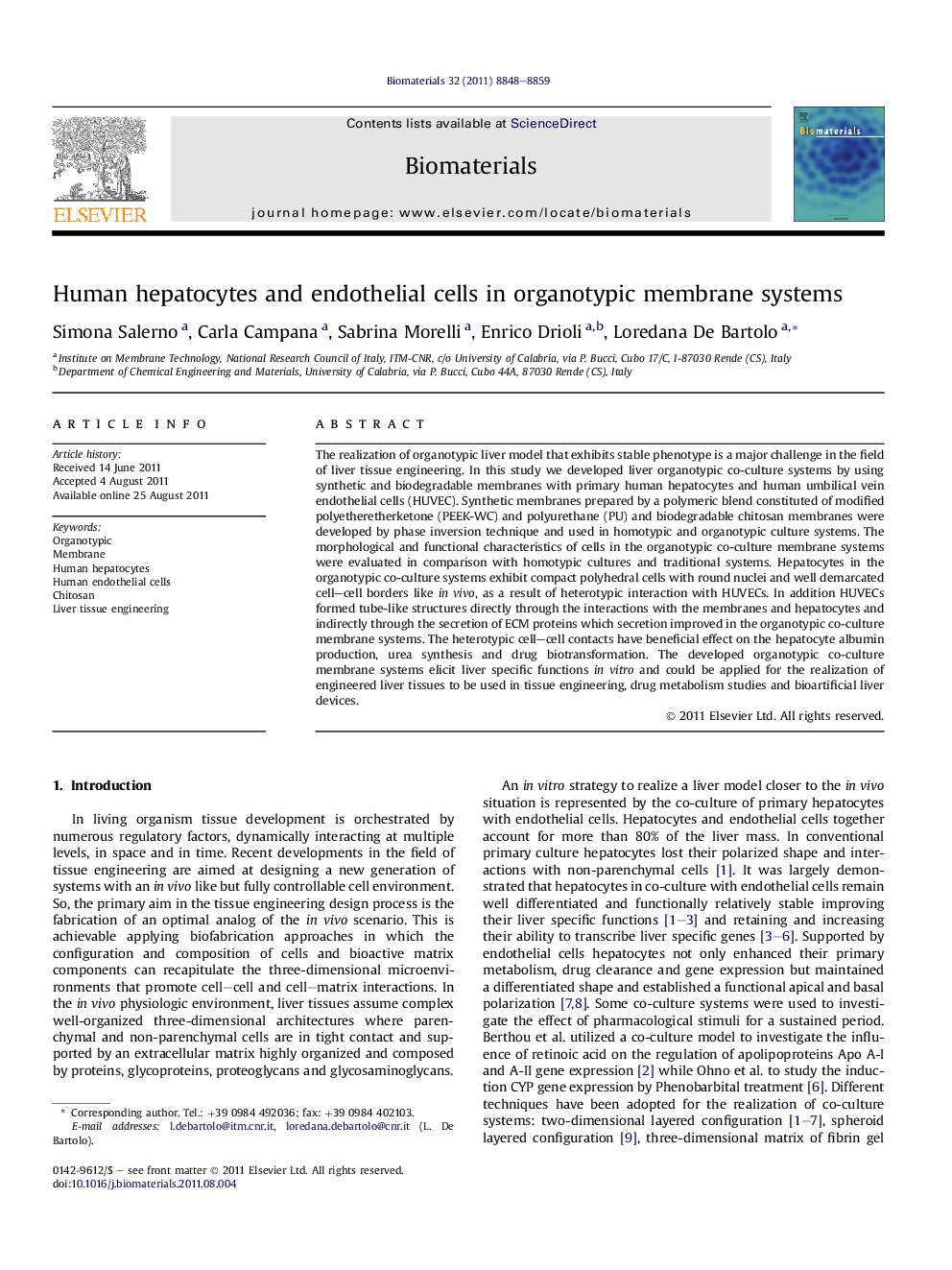| Article ID | Journal | Published Year | Pages | File Type |
|---|---|---|---|---|
| 7107 | Biomaterials | 2011 | 12 Pages |
The realization of organotypic liver model that exhibits stable phenotype is a major challenge in the field of liver tissue engineering. In this study we developed liver organotypic co-culture systems by using synthetic and biodegradable membranes with primary human hepatocytes and human umbilical vein endothelial cells (HUVEC). Synthetic membranes prepared by a polymeric blend constituted of modified polyetheretherketone (PEEK-WC) and polyurethane (PU) and biodegradable chitosan membranes were developed by phase inversion technique and used in homotypic and organotypic culture systems. The morphological and functional characteristics of cells in the organotypic co-culture membrane systems were evaluated in comparison with homotypic cultures and traditional systems. Hepatocytes in the organotypic co-culture systems exhibit compact polyhedral cells with round nuclei and well demarcated cell–cell borders like in vivo, as a result of heterotypic interaction with HUVECs. In addition HUVECs formed tube-like structures directly through the interactions with the membranes and hepatocytes and indirectly through the secretion of ECM proteins which secretion improved in the organotypic co-culture membrane systems. The heterotypic cell–cell contacts have beneficial effect on the hepatocyte albumin production, urea synthesis and drug biotransformation. The developed organotypic co-culture membrane systems elicit liver specific functions in vitro and could be applied for the realization of engineered liver tissues to be used in tissue engineering, drug metabolism studies and bioartificial liver devices.
